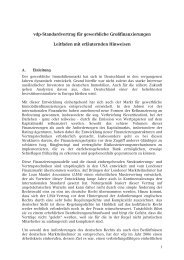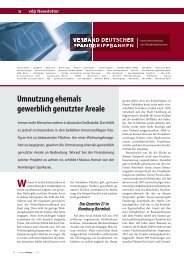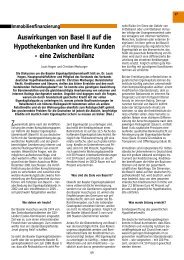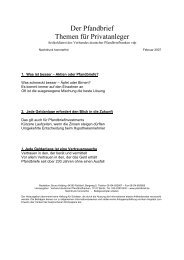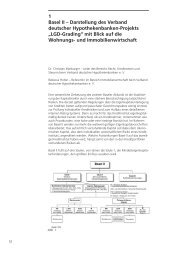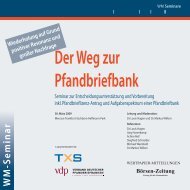The Pfandbrief 2011 | 2012
The Pfandbrief 2011 | 2012
The Pfandbrief 2011 | 2012
Create successful ePaper yourself
Turn your PDF publications into a flip-book with our unique Google optimized e-Paper software.
Quo vadis? <strong>The</strong> regulatory treatment of <strong>Pfandbrief</strong>e under Solvency II<br />
In contrast, <strong>Pfandbrief</strong>e with a rating of AA or worse are treated in the same way as unsecured<br />
debt. <strong>The</strong> capital requirement for 10-year <strong>Pfandbrief</strong>e increases to around 11% with a AA-rating,<br />
to about 14% with an A-rating and to as high as ca. 25% with just a BBB-rating. <strong>The</strong> capital<br />
requirement for <strong>Pfandbrief</strong>e without a recognised rating is approximately 29% (cf. figure 2).<br />
For privileged risk weightings it can be assumed that investors will prefer <strong>Pfandbrief</strong>e and<br />
other covered products to uncovered bonds.<br />
As the approach for calculating the spread risk depends on the rating and on the modified<br />
duration of a security, the capital requirement for fixed-income securities generally increases<br />
for poorer ratings and longer maturities (see Illustration 2). Ignoring the diversification effects<br />
resulting from the correlation assumptions made in the standard model, the capital requirement<br />
for a AAA <strong>Pfandbrief</strong> designed as a zero-coupon bond increases from around 3% for<br />
a five-year bond to more than 6% for 10-year bonds and finally to around 11% for 20-year<br />
bonds. While the interest rate risk encourages life insurers in particular, with high durations<br />
on the liabilities side, to increase the level of duration on their asset side, the spread risk offers<br />
the opposite incentive.<br />
Fig. 2:<br />
Spread risk II<br />
AAA AA A BBB BB B or lower unrated<br />
40<br />
Spread risk: Capital requirement as percentage of <strong>Pfandbrief</strong> on<br />
market value basis<br />
70%<br />
60%<br />
50%<br />
40%<br />
30%<br />
20%<br />
10%<br />
0%<br />
1 2 3 4 5 6 7 8 9 10 15 20 30 40 50<br />
Maturity (years)<br />
In contrast, government bonds from the European Economic Area (EEA) have thus far been<br />
free from spread risk, regardless of their creditworthiness. <strong>The</strong>re was no capital requirement<br />
in QIS5 even for Greek and Portuguese government bonds, although both of these countries<br />
have been hit by multiple ratings downgrades. In contrast to issuers of Public <strong>Pfandbrief</strong>e, this<br />
regulation grants the countries of the EEA a privilege that is largely politically motivated. But<br />
in view of the recent discussions regarding creditor participation (bail-in), credit and default<br />
risks in highly-indebted Euro countries can no longer be basically disregarded. <strong>The</strong> proposed<br />
introduction of collective action clauses underscores this argument.




